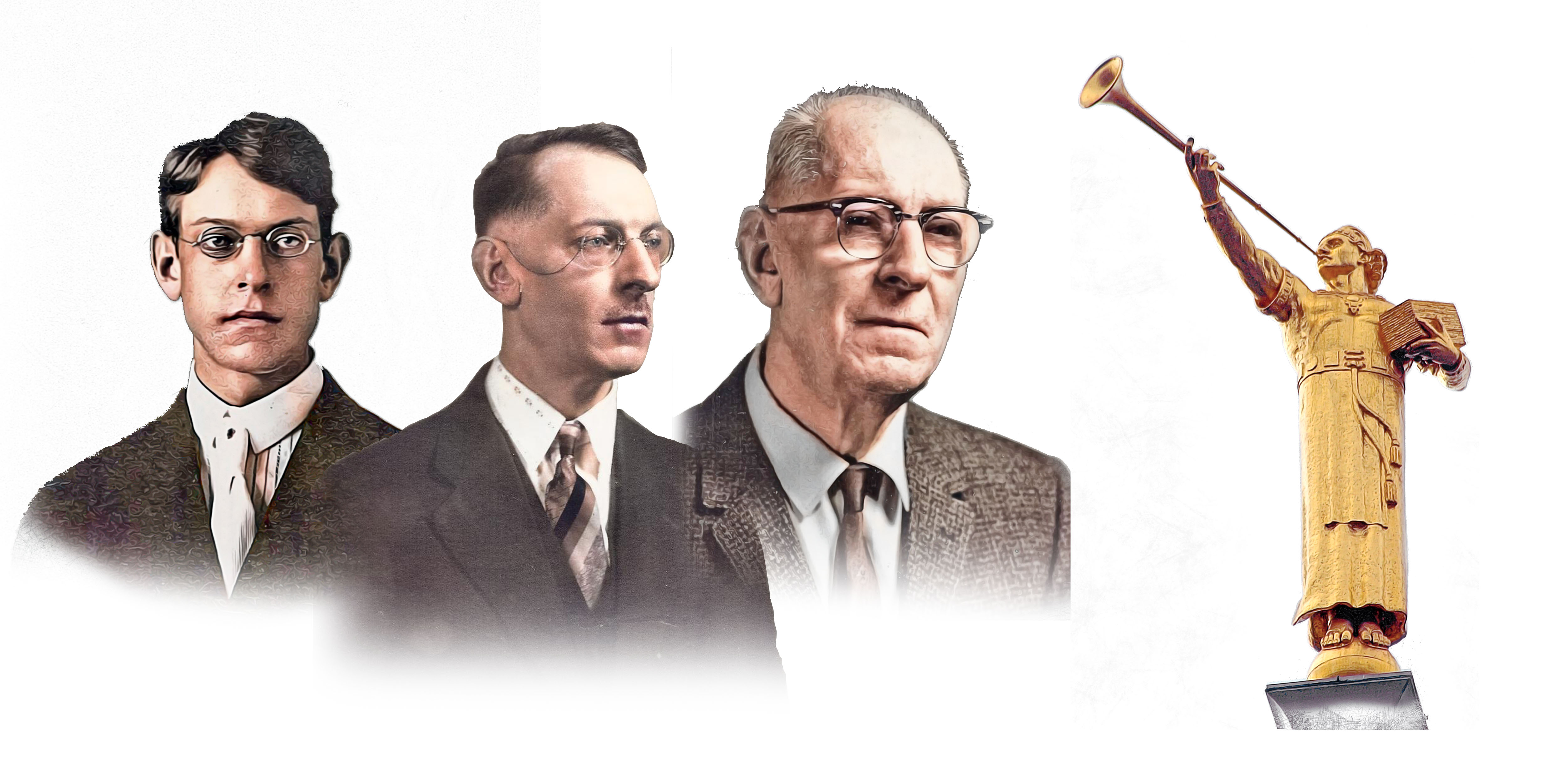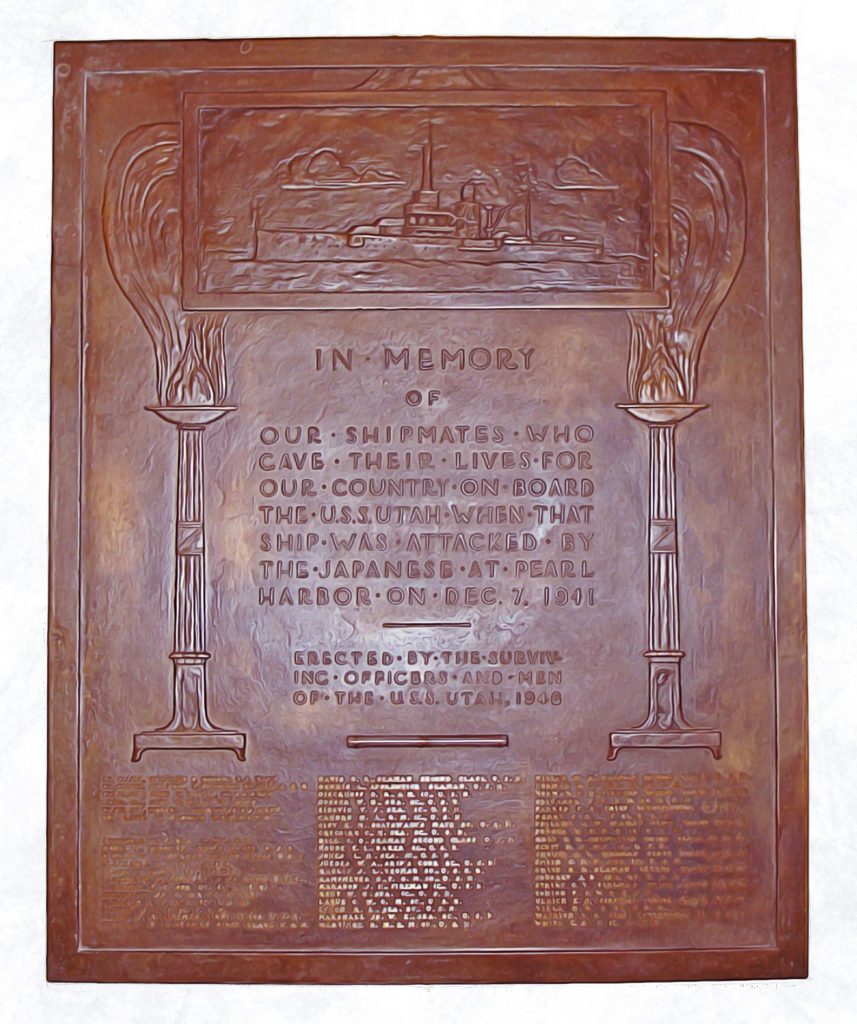
Millard Malin
SCULPTOR
Millard Fillmore Malin Jr.
STUDIED AT/WITH
Herman MacNeil, New York City National Academy of Design, New York City
BORN
25 October 1891
LDS MISSION
New Zealand
June 1909–February 1912
DIED
27 March 1975
“Of my own efforts in art and science, I would say … if my life and work are found to have any value, give the glory to God.
Millard Malin

Birth and Early Life
Millard F. Malin was born 25 October 1891 in Salt Lake City to General Contractor and musician Millard Fillmore Malin, and Latter-day Saint composer Annie Pinnock Malin. Millard was named, first middle and last name, after his Father, who was in turn named after the 13th President of the United States. His Mother was author of the Hymn “God our Father, Hear Us Pray.” Number 179 in the current Latter-day Saint Hymnal.[1] Malin, Millard Fillmore 1891-1975. Millard F. Malin autobiographical sketch, circa 1966 , (accessed: August 8, 2019)
Millard was the 4th of five Children, the only boy.
Latter-day Saint Mission
He served a mission in New Zealand from June 1909 to February 1912. His mission had been paid for by one of his older sister’s, Garnett, who worked as a stenographer to earn the funds necessary to support him. Ruby died shortly after Millard’s return home.[2] Malin, Millard Fillmore 1891-1975. Millard F. Malin autobiographical sketch, circa 1966 , (accessed: August 8, 2019)
Education
After a stint as a sales clerk, then an assistant branch manager at an Automobile Company, Malin enrolled at the University of Utah as a medical student. For the 1914-1915 school year, besides anatomy classes, he took art classes from Edwin O. Evans. While there he met and became friends with Edward O. Anderson, then an architect student. Nights and weekends as a student Malin worked for Joseph Conradi sculpting ornamentation for the Utah State Capitol Building. After completing his first year of classes, he worked full time on the State Capitol, and other available jobs to save up money.[3] Malin, Millard Fillmore 1891-1975. Millard F. Malin autobiographical sketch, circa 1966 , (accessed: August 8, 2019)
In 1917 he made his way to New York. Calling on multiple famous sculptors to secure work as an assistant. Eventually he was accepted by Herman A. MacNeil. He learned from MacNeil assisting on several of his works for about a year.[4] Malin, Millard Fillmore 1891-1975. Millard F. Malin autobiographical sketch, circa 1966 , (accessed: August 8, 2019)
He took a job working in Shipyards near the end of World War I, taking classes at Beux Arts Design in New York. After a year in New York, he made his way home to Utah, and took a job sculpting interior details for Pantages Theaters. The job took him from Salt Lake, Los Angeles, Memphis and then to Kansas City. There, he took evening classes at the Kansas City School of Art.[5] Malin, Millard Fillmore 1891-1975. Millard F. Malin autobiographical sketch, circa 1966 , (accessed: August 8, 2019) His instructor, in Kansas City, Merrell Gage, wrote him a letter of introduction to a friend of his, Gutzon Borglum, in New York State.
He left Kansas City and headed out to New York, where he was hired by Gutzon Borglum to assist in sculpting many of his works, including the Confederate Memorial Carving at Stone Mountain in Georgia.[vi] Gutzon, who is best known for carving Mount Rushmore, was born in Idaho to Latter-day Saint Parents who soon after left the Church and moved the family to the Midwest.[6] Malin, Millard Fillmore 1891-1975. Millard F. Malin autobiographical sketch, circa 1966 , (accessed: August 8, 2019)
Work for the Church
Malin did a fair amount of work for The Church of Jesus Christ of Latter-day Saints. Malin, at this point of his life, “had not been an active church-goer for many years.” Despite that, he was able to do many different jobs related to the construction of temples. He attributed this to his lifelong friendship with Edward O. Anderson, whom he had met at the University of Utah. He and Anderson had collaborated on the Sugarhouse monument, and by this time Anderson was the head architect for the Church.[7] Malin, Millard Fillmore 1891-1975. Millard F. Malin autobiographical sketch, circa 1966 , (accessed: August 8, 2019)
Los Angeles
In 1951 Malin began work on the Angel Moroni statue for the Los Angeles Temple. He planned the work so that as he neared completion of the Angel Moroni, he could begin on the font and oxen for the Baptistry of the temple. The oxen for the temple were done in sets of three that could be rotated 90 degreees, 180 degrees, and 270 degrees to form a full complete circle of twelve. In the set of three oxen, each one was given a slightly different stance and a slightly different set to the head. He used Long Horn cattle as his inspiration for the oxen. He was assisted in the creation of both the angel and the font by Torlief Knaphus, Maurice Brooks, and Elbert Porter.[8] Malin, Millard Fillmore 1891-1975. Millard F. Malin autobiographical sketch, circa 1966 , (accessed: August 8, 2019)

(top)Font and Oxen, 1954-57, Bern Switzerland, London England, and Hamilton New Zealand Temples; (middle-left) Celestial Marriage, Los Angeles California Temple, 1960; (middle) ; (middle-right) ; (bottom) Font and Oxen, 1951, Los Angeles California Temple
Near the dedication of the Los Angeles Temple, Malin received another commission from the Church for a Family Group statue for the grounds of the Los Angeles Temple. The statue presented some extra difficulty for Malin, he spent a large amount of time getting the clothing on the statue characters correct. He also struggled to get an arrangement of characters where heads did not hide behind others.[9] Malin, Millard Fillmore 1891-1975. Millard F. Malin autobiographical sketch, circa 1966 , (accessed: August 8, 2019)
To solve the issues with the heads, he created cast in plaster with the heads mounted on socket joints. This allowed him to arrange the heads in place, and lift them out completely to work on them in plaster.[10] Malin, Millard Fillmore 1891-1975. Millard F. Malin autobiographical sketch, circa 1966 , (accessed: August 8, 2019)
Bern Switzerland, London England, and Hamilton New Zealand
In 1954 Millard Malin began work on the oxen and font for the Bern Switzerland Temple. Unlike the Los Angeles Temple font, which was round, the font for this temple is oval in shape. Instead of a set of three oxen, a set of six individual oxen were sculpted to be cast twice and rotat3ed 180 degrees to complete the oval.
Instead of the longhorn cattle, he made short horned, chunky cattle. After the font was cast, he was praised in a letter from locals for so faithfully reproducing the famous Ementaller bulls of Switzerland. The likeness, as far as Malin could tell, was purely accidental.[11] Malin, Millard Fillmore 1891-1975. Millard F. Malin autobiographical sketch, circa 1966 , (accessed: August 8, 2019) He was assisted in this project by Torleif Knaphus, Maurice Brooks, and a young man just out of college by the name of Karl Quilter.[12] “Sculpture Work Progressed for New Temple Fonts,” Church News, 4 September 1954.
The casting of the new font and oxen were sent to the Mendrozi Bronze Works on the Swiss/Italian border. There, three sets of the would be cast, making one font each for the Berrn, London and Hamilton Temples.[13] Malin, Millard Fillmore 1891-1975. Millard F. Malin autobiographical sketch, circa 1966 , (accessed: August 8, 2019)
Other Work
Outside of the Angel Moroni Statue, Millard Malin is best known for the Sugarhouse monument in the Sugarhouse area of Salt Lake. The monument memorializes the efforts to grow and harvest sugar beets in the Salt Lake valley.[14] Malin, Millard Fillmore 1891-1975. Millard F. Malin autobiographical sketch, circa 1966 , (accessed: August 8, 2019) The monument is a tall stone obelisk. At the top are carved two Native American figures, one on the east holding war gear and one on the west holding a peace pipe.[15] Malin, Millard Fillmore 1891-1975. Millard F. Malin autobiographical sketch, circa 1966 , (accessed: August 8, 2019)
Two Bronze figures rest on the base, on the east a female figure symbolizing productivity, and on the west a male figure representing a mill builder. Additionally the monument features bas reliefs on the north and south sides, on the north representing a sugar mill and on the south representing the fur trade.[16] Malin, Millard Fillmore 1891-1975. Millard F. Malin autobiographical sketch, circa 1966 , (accessed: August 8, 2019)
Other Pursuits
Besides being a sculptor, Malin was also an avid Astro Physicists. Along with taking classes for art, he would often take classes on math and science as well. In his youth, Millard was taken with the idea of their existing a binary star system with some peculiar properties. In this idea of his, the central star pair consisted of a larger, brighter hot star, and a dimmer, smaller and cooler star. Most of the smaller star’s light and heat was actually imparted by the larger. However, from the point of view of the inhabited planet in the system, the larger star would be completely, and by the orbit of the bodies involved, constantly, obscured from view by the smaller star. Much of Malin’s free time was spent trying to prove not only the possible existence of such a star, but that his idea was in fact our very own solar system. In his Autobiography sketch, written in 1966, just nine years prior to his death, he affirmed that he became more convinced that his idea explained the eccentricities of our solar system the older he got.[17] Malin, Millard Fillmore 1891-1975. Millard F. Malin autobiographical sketch, circa 1966 , (accessed: August 8, 2019)
Famous Works by Millard Malin
| Sugarhouse Monument | Sugarhouse Utah | 1930-1934 |
| Battleship Utah at Pearl Harbor plaque | Utah State Capitol | |
| Angel Moroni Statue | Los Angeles California Temple | 1951 |
| Font and Oxen | Los Angeles California Temple | 1951 |
| Font and Oxen | Bern Switzerland Temple | 1954 |
| Font and Oxen | London England Temple | 1955 |
| Font and Oxen | Hamilton New Zealand | 1957 |
| “Celestial Marriage” | Los Angeles California Temple | 1960 |
| Dinosaur Sculptures | Utah Field House of Natural History, Vernal Utah | 1964 |
Chapter 4 Navigation
Related Articles


